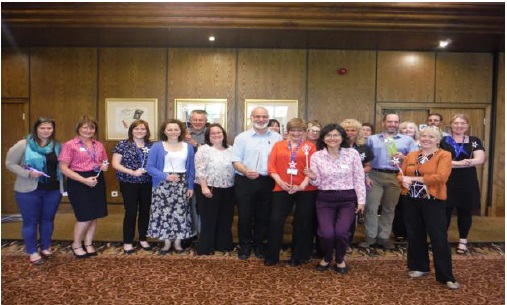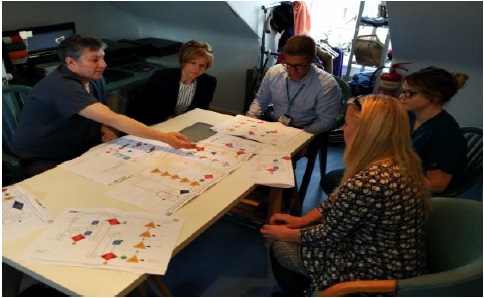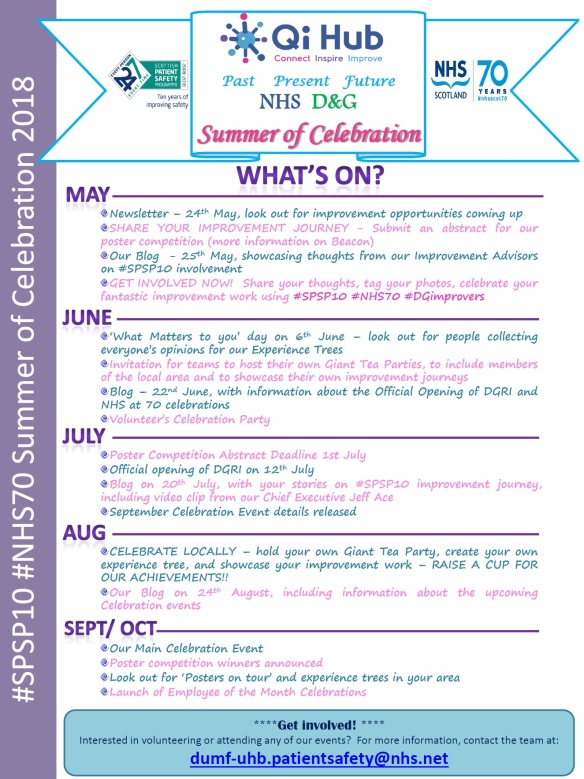Are you someone who craves the crunch of crisps? Enjoys a chicken and rice soup? A chocolate sundae where you delve through layers of whipped cream, ice-cream, chocolate brownie, chocolate pieces, and chocolate sauce?!

We could describe the foods above as containing lots of textures, or as having different consistencies… runny, crunchy, crispy, flaky, smooth, chewy, soft, thick, thin.
The consistency of your dinner is unlikely to be a high priority.. unless you’re a food critic or a chef! Most of us decide on food choices based on what sort of flavours we fancy, how ‘filling’ or for some folk ‘light’ a meal is. When we order in a restaurant, we often peruse the menu before picking a firm favourite dish, or maybe we pick something we know we could never make as well at home, or something expensive – if someone else is paying!!
For some people with ‘dysphagia’ (swallowing problems), choices about what to eat, and what they can safely eat, are more restricted.
The adult Speech and Language Therapy team work closely with many adults who have acquired ‘dysphagia’ as a result of a health condition i.e. stroke, brain injury. Our main roles are in assessment of an individual’s swallow (how strong is it? How quick is it?), giving handy hints and tips about how to make swallowing easier depending on the particular difficulty (sitting upright whilst eating, tucking chin to chest), and advising on how food and drinks can be modified so that they’re easier to manage (and prevent unpleasant coughing/choking, and pesky chest infections!!)
So that you look less like Theresa May coughing on water at this conference…

And more like this happy lady.. happy whilst eating her chips from the canteen…

We used to use ‘stages’ to describe the consistency of drinks, and ‘textures’ to describe the consistency of foods. As is often the case with healthcare which develops and evolves, there is to be change! This change comes in the form of introducing a new way to talk about food and drink consistencies. The plan is for these to be used internationally, as pretty colourful triangles and numbers can be understood in any language. Here’s a diagram of the new International Dysphagia Diet Standardisation Initiative (IDDSI) triangles.

Essentially, starting from the very bottom at level 0 is the ‘thinnest’ liquid available – think plain old water. As you work your way up the levels, the consistency gradually thickens – think of yoghurt drinks and smoothies. At level 3, there is an overlap where the consistency can be provided as a moderately thick drink, or a liquidised food (e.g. McDonald’s chocolate milkshake/custard) and as you work your way up to level 7, the food becomes more challenging – requiring more mouth control in biting, chewing with your teeth, mashing with your tongue, co-ordinating a mix of different textures (think of that chicken and rice soup/chocolate sundae I mentioned right at the start!) and controlling a strong timely swallow.
Our adult Speech and Language Therapy team embraced a food challenge to try and understand the new descriptor ‘levels’ and to experience what it might be like to be recommended a specific consistency ‘level’ and to prepare meals accordingly. It was much harder than we anticipated!
Here are some of our reflections:
Level 3 – Liquidised Food
Laura’s first stumbling block was when she realised she doesn’t own a blender! She therefore changed the task to see if she could buy a day’s worth of convenient food and drinks at level 3 consistency.

Whilst it’s maybe not as healthy as making a meal from scratch, and probably more expensive, she felt it was more realistic for people like her who prefer meals that are more easily prepared. She was required to think ‘out of the box’ – buying fruit and veg puree from the baby aisle, although she highlighted that this might feel slightly demeaning to an older adult. She reflected on the challenge, saying “If I had to have my food and drinks modified to this level on a long term basis then I don’t think I would manage with the hunger! I would probably ask for the support of a registered dietitian to offer suggestions on improving oral intake and maintaining nutrition and hydration.”
Level 4 – Pureed food
Becky cooked a mushroom risotto, before putting it through the food processor!

Becky reflected on the experience, saying that she would feel frustrated if she was having to prepare food to level 4 consistency out of necessity, as she struggled to ensure that the consistency was correct. Claire who also prepared food to level 4 consistency felt that it took longer than usual to prepare dinner as she was having to blend and sieve everything. This can be a real pain if you only have one of each and are required to keep washing everything as you go! Jan who also completed the challenge felt that she would miss the different textures of foods if she was required to prepare all meals to level 4 consistency.
Level 5 – Minced & moist food
Amy cooked bhurjee, an Indian take on scrambled egg.

She felt that the challenge helped her think about how complicated it can be for patients/family/carers of people with dysphagia to prepare food to the correct consistency level. Whilst Helen was completing the challenge, she reflected on the fact that food is about so much more than nutrition. It is often used for social occasions, and gifts, and she thinks that she would struggle going out to eat in cafes/restaurants with friends and family if she was only able to eat food which was minced and moist. Another valuable insight offered by Helen was the added layer of difficulty there may be whilst preparing food of modified consistencies, if an individual’s cause of dysphagia is post-stroke, and they are required to do food preparation (i.e. small chopping, dicing, blending, sieving) with their non-dominant hand.
Level 6 – Soft & bite-sized food
Kirsty cooked a Balmoral chicken with peppercorn sauce, level 6 style!

She felt uncomfortable as an adult having her dinner presented cut up into 1.5cm bite-sized pieces almost as if for a child, but still managed to present it beautifully!! Helen prepared macaroni cheese, assuming that this would be an easy way round a level 6 meal. Turns out that pasta which measures up as 1.5cm when dry, expands to 2cm when cooked, and therefore each and every piece of pasta had to be trimmed by 0.5cm to meet the IDDSI descriptor of 1.5cm!! Talk about time consuming! IDDSI’s 1.5cm thumb nail sized pieces have been proposed as this is smaller than the adult trachea (wind-pipe), and therefore minimises the potential of a choking risk. Helen felt as though the challenge made IDDSI’s strict descriptors more practical, and personal, and removed them from just being on paper.
Completion of this challenge highlighted for many of the team just how important food is.. for socialising, for comfort, for enjoyment! Most of us will celebrate good news by popping open a bottle of bubbly, or heading out for dinner in a favourite restaurant! Whilst these new descriptors have rigid descriptions – they have been created and tested so that everyone can enjoy food and drink as safely as possible!
Claire Angus is a Speech & Language Therapist for NHS Dumfries and Galloway
(The International Dysphagia Diet Standardisation Initiative (IDDSI) is being implemented throughout Dumfries & Galloway over 2018 in all hospital, care and home settings. From 21st May, the fluid thickener Nutilis Clear changes to follow the new levels of drink, and anyone using Nutilis Clear will need to mix their drinks slightly differently.)
- For more information on IDDSI, look for links on the Beacon flash adverts or visit:
http://iddsi.org/Documents/IDDSIFramework-CompleteFramework.pdf
- Follow the adult SLT team on social media using:
@SLT_DG on twitter
@SpeechandLanguageTherapyadultService:NHSD&G on facebook.


























